Planting a lemon tree is actually pretty simple. As long as you fulfill the basic requirements of this citrus plant, growing lemons is a wonderful and rewarding experience.
Lemon trees can be grown indoors or outdoors. Lemon trees can be grown in zones 9 to 11; the Meyer lemon variety can tolerate temperature as low as 22F. Plant lemon trees in spring, in a pot or hole at least 2-3 feet in diameter and depth. Lemon trees require at least 6-8 hours full sun per day.
Whether you want to grow a lemon tree for your garden, patio, or as a houseplant that fills your house with greenery and an interesting lemony scent, this article is going to tell you how you can grow a lemon tree from seeds.
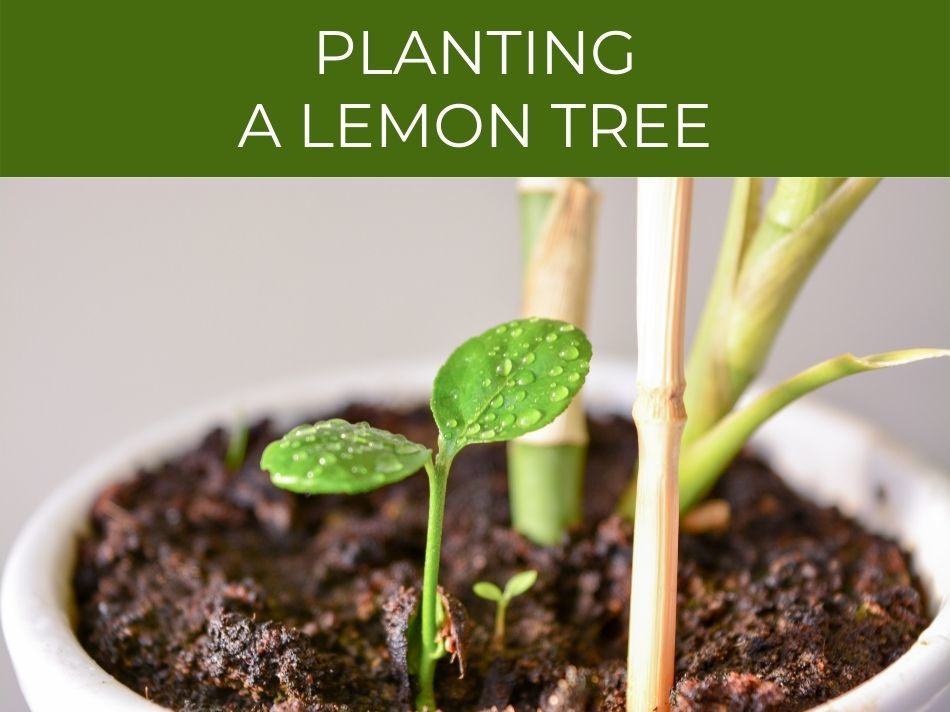
Planting a Lemon Tree
You cannot only plant a lemon tree outdoor, but this citrus plant does well indoors as well. Let’s see how you can grow lemon trees outdoors and indoors.
Also, if you’re interested in growing lime trees, check out the complete guide to kaffir lime trees.

How to Grow Lemon Tree Outdoors
As compared to other citrus fruit plants, lemon trees are more sensitive to cold. Therefore, while growing this tree outdoor, always plant it to the South near your house. A lemon tree needs protection from frost; growing it near your house would be helpful in this regard.
Moreover, lemon trees grow best in full sunlight.
Do you know that many plants can grow in absence of sunlight most of the time?
Read the complete article that answers: ”Can plants grow without sunlight?
Although these trees can tolerate a wide range of soils, they prefer well-drained and slightly acidic soil.
Lemon trees need to be slightly higher than the ground.
To accomplish this, dig a hole a little shallow than the root ball, and place the tree in the hole. Now replace the soil and tamp firmly.
Water the plant sufficiently and add a little mush as it helps in retaining the moisture.
This plant requires deep watering once a week. You can prune the plant, if required, to maintain the shape and height of the lemon plant.
See our general article on caring for lime trees.
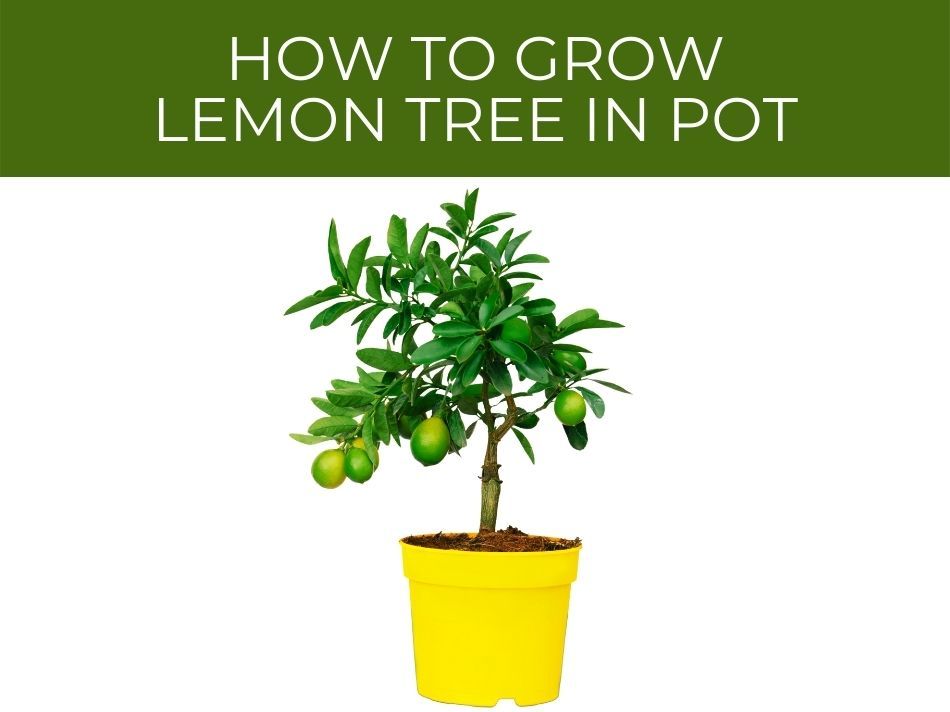
How to Grow Lemon Tree in Pot
Lemon plants make incredible houseplants as long as you provide them a well-drained soil, proper drainage, and adequate room to grow. An average height of a lemon tree growing indoors is around 3 to 5 feet.
Indoor lemon trees also prefer slightly acidic, evenly moist soil. You can also fertilize the soil as per the requirement.
The best temperature required by lemon trees for thriving is 70-degree F during the daytime and 55-degree F at night. If the temperature falls below 55-degree F, the plant can go into dormancy.
As mentioned earlier that lemon trees require a lot of sunlight, you may need to arrange fluorescent grow lights to fulfill the plant’s requirements during winter.
To encourage the fruit-bearing capability of a lemon tree, it is recommended to place the plant outdoor in warm periods. It also helps in pollination as lemon trees growing indoors cannot be pollinated by bees and other insects. However, you can hand pollinate the plant as well.
See our full guide to lemon tree flowers (and problems & fixes for not setting fruit).

Lemon Tree Hardiness
According to the US Department of Agriculture, lemon tree hardiness is 9 to 11. These are subtropical plants that do well in warmer climates with the ability to tolerate drought. However, lemon trees are highly sensitive to frost.
Generally, many lemon varieties–like Meyer lemon–are cold hardy to 22F.
Be sure to check out the complete article on lemon tree hardiness (and best varieties).
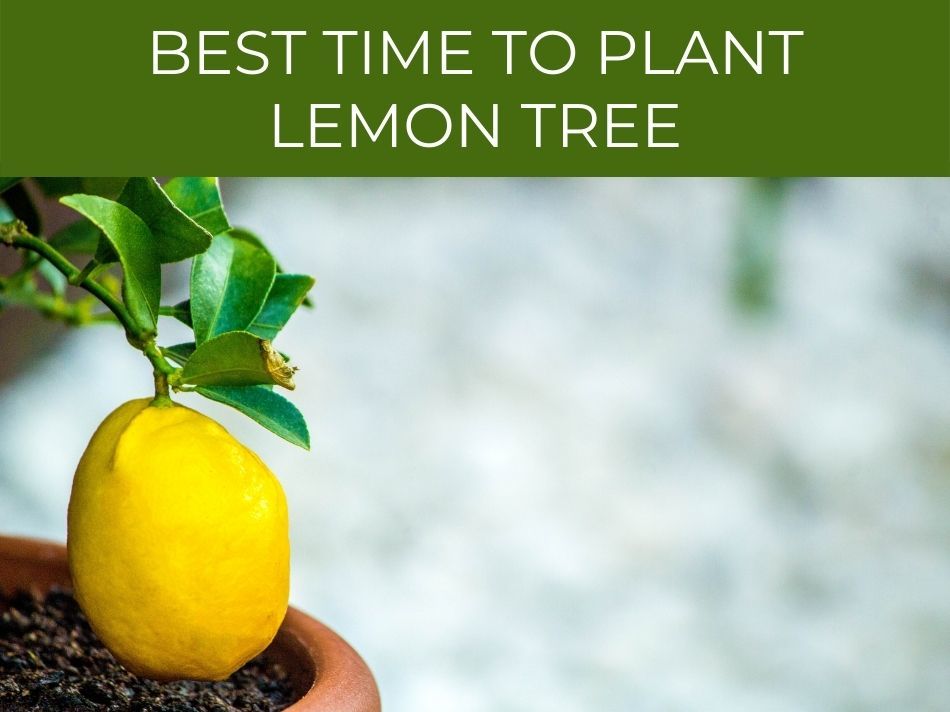
Best Time to Plant Lemon Tree
The best time to plant a lemon tree is during spring. It helps you in protecting your young lemon plant from harsh temperatures in winter and summer. Planting your lemon tree also allows it to establish it before hot weather starts. However, a major factor on which it depends is the growing zone you want to grow it.
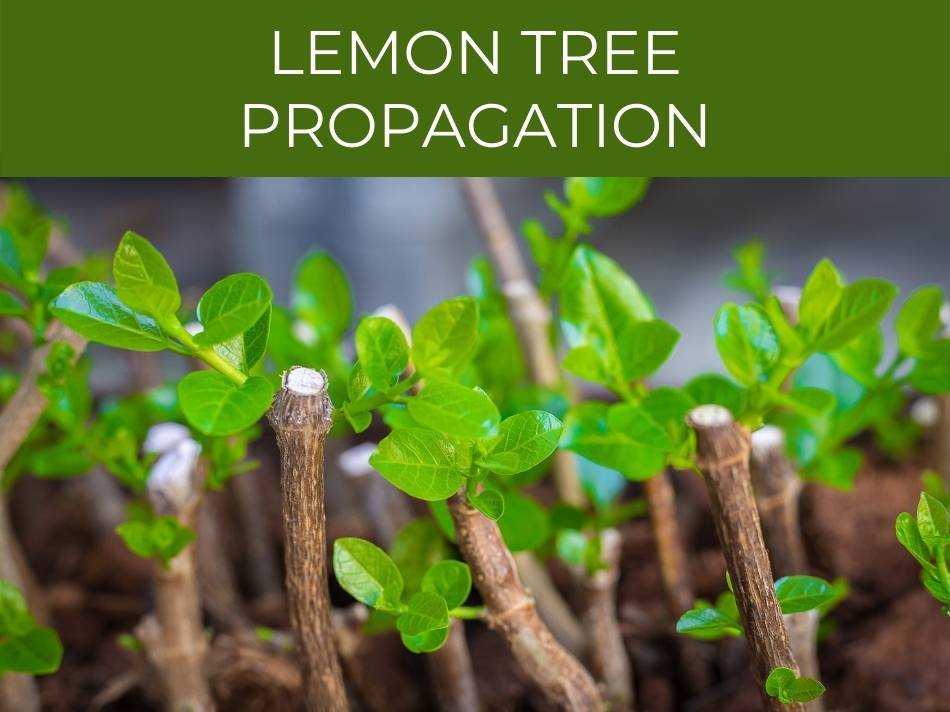
Lemon Tree Propagation
There are many ways to propagate a lemon tree. However, three main ways are; seeds, cutting, and layering. These are quite easy ways for lemon tree propagation and an average gardener can successfully manage growing a fruit-bearing tree using any of these techniques.
Propagation from Seeds
Growing a lemon tree from seeds is easy. Seeds found inside the fruit can easily sprout. Viable seeds usually sprout within one to two weeks.
Propagation from Cuttings
Another reliable method of growing a lemon tree is using plant cuttings. Once the cutting is rooted in the soil successfully, you’ll notice the plant giving offshoots. The process may take up to six to twelve weeks. In colder regions, it takes up to two months.
Propagation by cuttings is a popular technique when seeds aren’t available.
Propagation by Layering
Using the layering method, you can get a robust plant in less time as compared to growing a plant from seeds or cuttings. However, this method is not recommended for inexperienced or new gardeners.
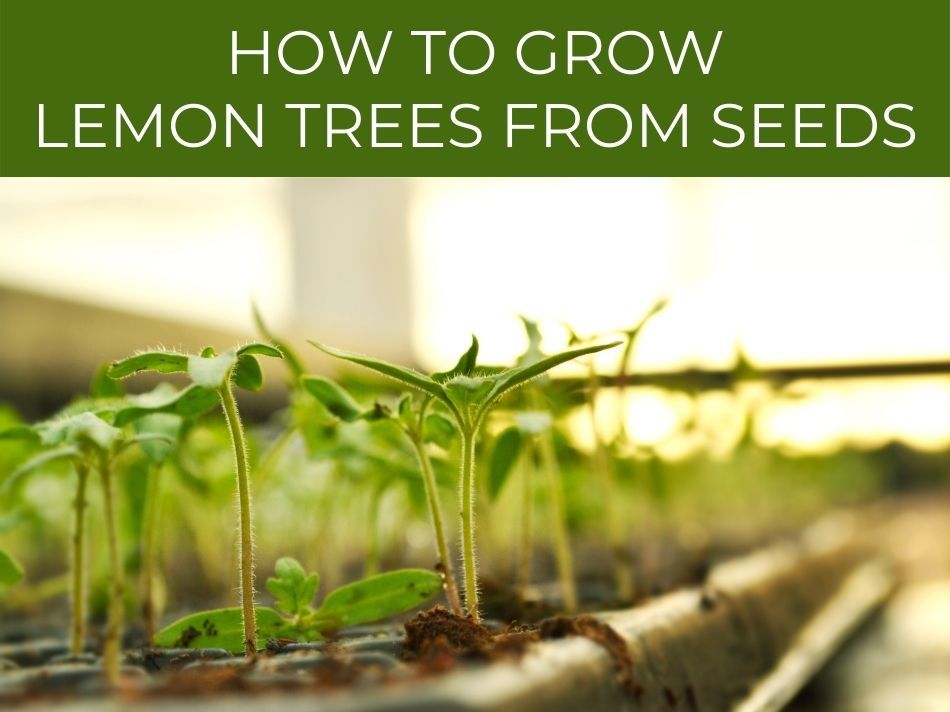
How to Grow Lemon Trees from Seeds
Growing lemon trees from seeds is an affordable way to fill your home with beautiful lemon plants. You don’t need to invest a lot in it. As long as you have well-drained soil, a suitable pot, a well-lit window sill, and a lemon with pips, you are good to go.
The ideal time to sow your lemon seeds is in April, but you can do it any time of the year.
How to Prepare Seeds to Grow?
You can prepare some viable lemon seeds in the following steps:
- Cut a lemon in half and remove the seeds. Discard all small, sliced, or shriveled seeds as they won’t germinate.
- To separate viable seeds, from the remaining, place the seeds in a glass of water. The seeds that sink in the glass are good to start with. However, the floating ones most probably wouldn’t germinate. You can discard them.
- For successful germination, plant at least 5 seeds.
- Remove the viable seeds from water, and then remove the slimy coating from the seeds. This removal is necessary as it contains sugar and encourages decay and rot. Usually, this slimy layer is dissolved by the acid in the lemon as the decomposition process carries on but it may take a little longer.
- To remove the coating, wash the seeds under the tap using a sieve. Another way is to put the seeds in your mouth and suck on them until you don’t get a lemon taste anymore; this is the easiest and the quickest way to remove the slimy coating.
- As an alternate, you can also remove the seeds’ white shells. This could be a little difficult for people who are new as you have to be careful and not to damage the seed inside. You can use a sharp knife to create a small nick and then peel the shell off.
- Your seeds should not dry out. They need to be moist in order to germinate properly. If you don’t have plans to plant the seeds immediately, keep the seeds in a glass of water or wrapped in a wet paper towel until you are ready to plant them.
Can You Germinate Lemon Seeds in Paper Towel?
If you are wondering whether you can germinate your lemon seeds in a paper towel or not, let us tell you. Yes, you can. In fact, it is quite easy to do. Let’s see how:
- Remove the seed’s white shell as mentioned above.
- Position all seeds on a paper towel sheet about ½ an inch apart and cover them carefully using another sheet.
- Wrap the corners of the sheet to make it look like a parcel.
- Spray the sheet with water and seal it in a ziploc bag. Make sure that the bag has air in the bag.
- Place the sealed bag in a warm dark space, and check it daily to ensure that the towel is not dried out. If the sheets look dry, spray with more water.
- Once you see the seeds sprouting, open the paper towel parcel.
- Once the sprouts are 1.5 inches in length, fill a terracotta pot with the right, preferably citrus, compost, and plant the germinated seeds in the pot.
- Move the plant to a warmer spot that receives adequate light. Your seedlings will continue to grow.
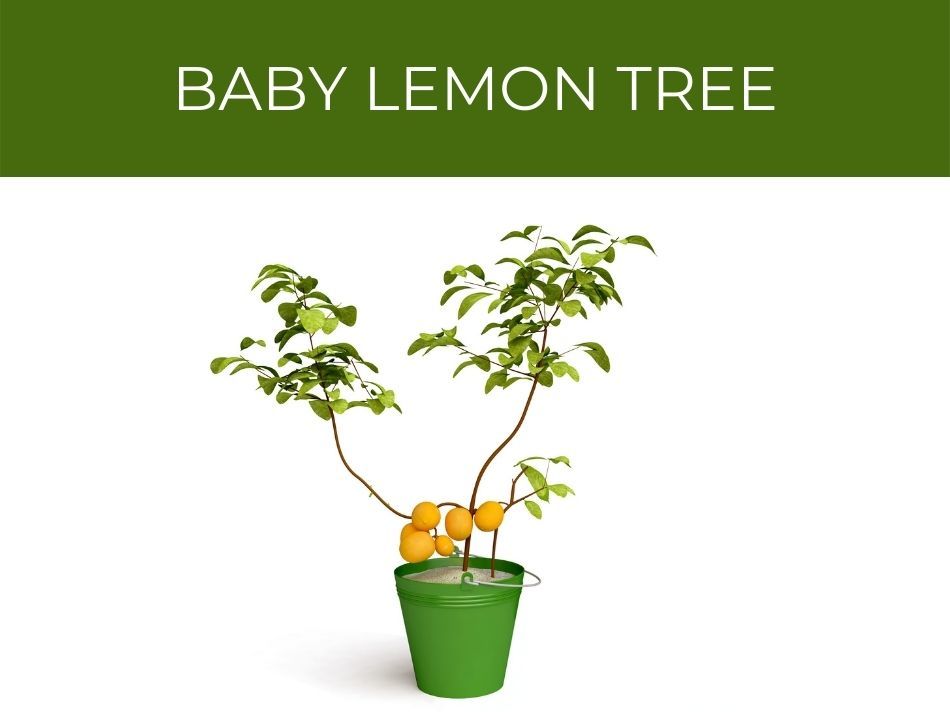
Baby Lemon Tree
As now you have your seeds ready, you can plant them to have baby lemon trees.
- Take a small pot that allows a lot of drainage. The best pot material is terracotta as it allows moisture to leave the pot through the pot’s walls. It will be helpful in preventing root rot.
- Now fill the pot with good quality citrus compost; preferably a variety including sharp grit.
- Moist the soil and plant the seeds about half (½) an inch deep.
- Place the pot at a warmer spot, like near a well-lit window sill. Make sure that the soil never dries out completely.
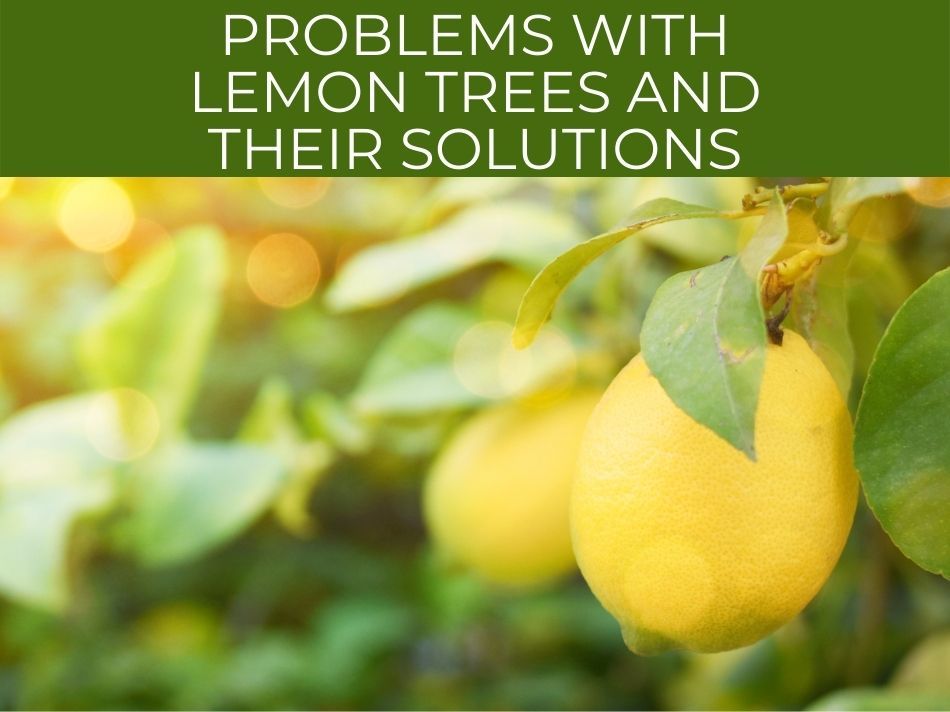
Problems with Lemon Trees and Their Solutions
Lemon Tree Flowers but No Fruit
There are many reasons why lemon tree flowers but no fruits including lack of water during Summer and Spring, receiving inadequate sunlight, lack of potassium, lack of pollination, and extreme weather conditions.
Identify the issue and resolve it to restore the ability of your plant to bear fruits. You can learn more about lemon tree flowers but no fruit issue in the linked article.
Yellowing Leaves
Lemon plants are gluttons for food. If the nutrients are short in supply, the plant’s leaves turn yellow. Usually, feeding your plant with a good citrus fertilizer will fix most of the problems.
If your seedlings are turning yellow,check out our complete guide on why are my seedlings turning yellow.
Lemon Scab
Lemon scab, also known as verrucous, is a common lemon-tree issue. Tiny lumps appear on the skin of the leaves and fruits. As it does not affect the inside of the fruit, many people leave it alone. To control this issue, spray copper. Removing infected fruits, twigs, and leaves also help. Spraying before and after flowering is helpful as well.
Fruit Drop
Fruit drop is another common issue in most citrus plants. Although fruit dropping to an extent is normal, continuous fruit drop is not. This could be due to several reasons including lack of moisture, sudden changes in temperature, poor pollination, etc.
Adequate watering during the early stages is important. You can also apply a layer of mulch to retain moisture. If your plant is outdoor and you are in a cooler region, moving your plant to a warmer spot is also important.
Lemon Tree Pests
Pests love lemon trees. There are many lemon tree pests. Some of them are relatively harmless like aphids, whereas, others are serious pests for example citrus rust mite. These pests are more harmful to young plants as compared to established ones.
One way to get rid of these pests is to spray your plants with oil sprays. As oil sprays do not harm the plant as toxic pesticides, these prove to be more effective against lemon tree pests.
Lemon Tree Leaves White Spots
The white spots on a lemon tree leaves are due to a fungal infection known as sooty mold. To treat these lemon tree leaves white spots, spray neem oil insecticide. Ensure that both the top and the underside of the foliage are sprayed. Depending upon the extent of this problem, you may need to repeat spraying in 10 – 14 days.
Lemon Tree Roots Exposed
If you are growing a lemon tree in a pot and its roots are partially exposed (hair-like roots), it is fine. However, if your lemon tress’s roots are exposed outdoors, you may need to form a berm around its dripline. It will allow the plant to adjust their water intake according to their need.

Do Deer Eat Lemon Trees
Well, deer, usually, are not fond of plants that have aromatic leaves, and the leaves on lemon plants are quite aromatic. Therefore, when they can access other plants, they will most likely ignore lemon trees. However, if they are hungry they can eat anything including your lemon tree.
An effective way to protect your trees from deer is to add a little human scent to them. Deer shy away from anything that gives them a human hint. You can tie used soap bars to your tree branches or make a solution of 6% hot sauce with 94% of water and spray it on the leaves.
Last Words
Planting a lemon tree indoors and outdoors is quite easy. You can grow a fruit-bearing tree with a little care and maintenance. By providing suitable growing conditions, you can let your lemon tree grow healthier and enjoy home-grown fruits.

